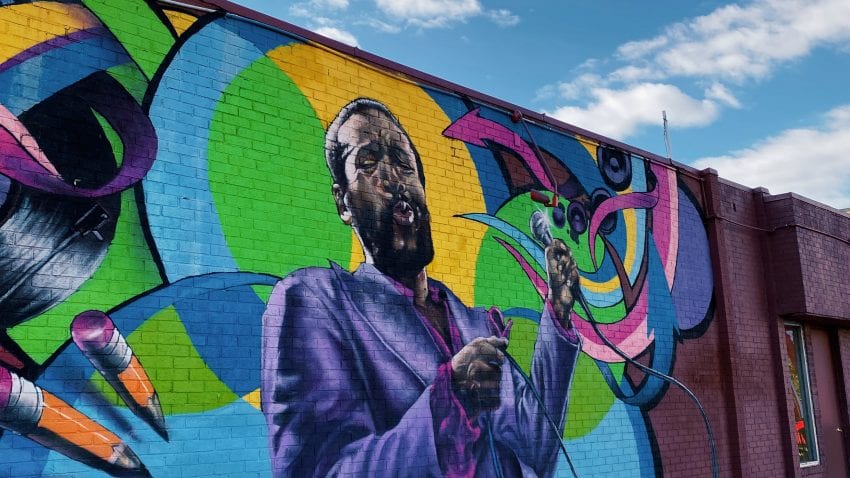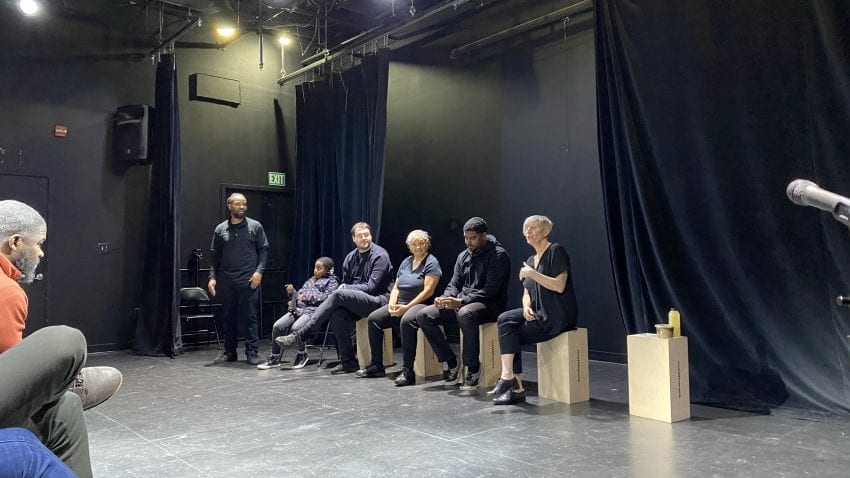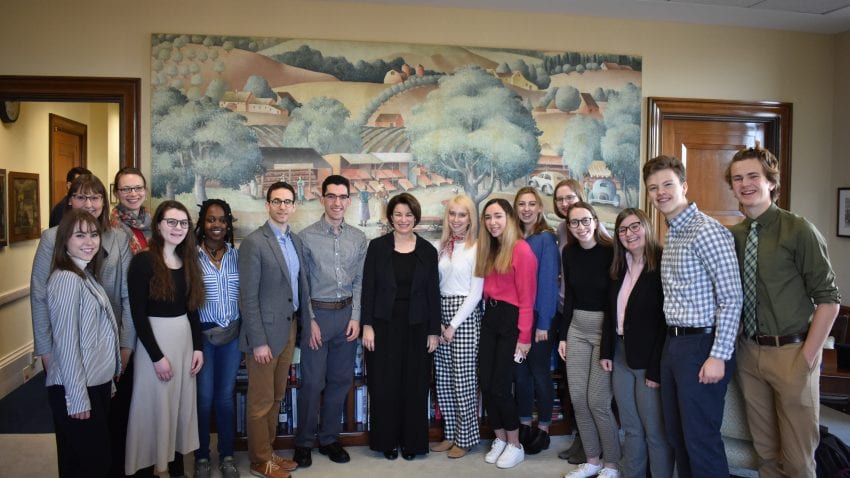I signed up for Democracy and the Arts in DC expecting the “arts” part of the course to be pretty challenging and for the “democracy” part to be a little easier for me. I enjoy art but have never personally been very involved so my overall knowledge about arts and arts advocacy grew a lot over the course, and I expected that. I did not expect my understanding of democracy and civic engagement to change very much because I consider myself a pretty politically active person and I thought I had a good understanding of my ability to be civically engaged. I expected that site visits would be very one-sided and consist solely of us asking professionals questions and was very pleasantly surprised to have site visits where we not only could ask questions and learn a lot but also have important, powerful people listen to our opinions and ideas on different issues. I’m very happy I took this class and got the opportunity to learn about the local community in DC, the federal government and its relation with the arts, in addition to furthering my own ideas of my civic identity.
From the beginning of the class, we learned about the two communities that exist in the city. The Washington side is the federal community that has high turnover because people generally don’t stay very long. The DC side is the community of people who live in DC long term and are engaged locally. Both groups are important but very different and often the local DC community is not acknowledged or seen, quite literally due to the fact that residents here do not have voting representations in Congress. In addition to learning about the two communities living in DC, we also must acknowledge the fact that DC is sitting on the ancestral land of the Nacotchtank tribe.

Mural on the Attucks Adams tour.
On our first full day in DC, we went on a walking tour of Black Broadway with the Attucks Adams tour company. This was a great way to start the trip because it helped us contextualize the history and culture of the city. Washington DC used to be majority African American but the demographics are changing due to gentrification. On the Attucks Adams tour, we learned a lot about the vibrant cultural history of the city through murals. We saw many murals dedicated to important artists and musicians, many were DC natives and others were important African American role models.

The playback theater actors during our discussion with them following the show.
I think many tourists to DC are only interested in DC as the nation’s capital and do not engage with the local community so I was glad we were able to. The arts scene in DC is very impressive, we attended performances and visited organizations that were local to DC. One performance that really stuck with me was the playback theatre we saw at the Anacostia Arts Center. Playback theater is where actors on stage improvise and act out stories that audience members shared. Our group took up about half the audience and the majority of the other half of the audience were people born and raised in DC. Only one person in our group shared a story so the rest of the stories we saw were stories from DC locals about their experience living in DC. The two stories that stuck with me the most were about the Million Man March and the DC sniper. These events happened either before I was born or when I was too young to remember so I didn’t even know what they were. Playback theater is really powerful because not only did I learn what the events were but I got to hear from people who lived through them about how these events impacted them. Learning history is important but I think seeing the emotions that accompany historical events is especially powerful so I was very grateful that these people were willing to share their stories.

Our group with Senator Amy Klobuchar.
In addition to interacting with the local DC community, we also learned a lot about the federal government and its role in the arts. Being from Minnesota, I’ve always viewed the federal government as something distinctly removed from myself and my only way to have a say is to vote. This trip definitely changed my perception of the federal government. While being here we got to meet with both our senators and staffers in Angie Craig’s office, and even attend part of the impeachment trial. We also went to several federal organizations such as museums and organizations dedicated to funding the creation of art. Every site visit was different due to the nature of the organization we were visiting but one constant was that at almost all our site visits we were able to talk with one or more people on the staff. Everywhere we went we were met with people who genuinely cared about meeting with us and hearing what we have to say. In the offices of the Senators and Congresspeople, we had some staff even ask us questions about issues that college students care about. In all of our site visits, we asked the people we met with to tell us about their vocational journey to the place that they are now. As someone who still has no idea what I want to do with my life, it was super refreshing to hear that very few people had a straight path from undergrad to where they are today. Our site visits with federal institutions showed me a much more human side of the federal government that I had never seen before. I know now that I can have a voice not only in state and local government but even federal government as long as I put in the time and effort.
One thing that stayed consistent across all our site visits, both with local and federal organizations, was how much the people working there care about the arts and work hard to ensure that all people can access arts in their own communities. I was interested to ask people in federally funded organizations how changing administrations affect how they can do their jobs. Although party politics to affect the arts, I was surprised to see that changing administrations do not affect the arts as much as I thought they did. Both locally and federally, the people actually making an impact in arts and arts advocacy are not politicians but people in organizations who work hard every day to strengthen the arts in our country.
